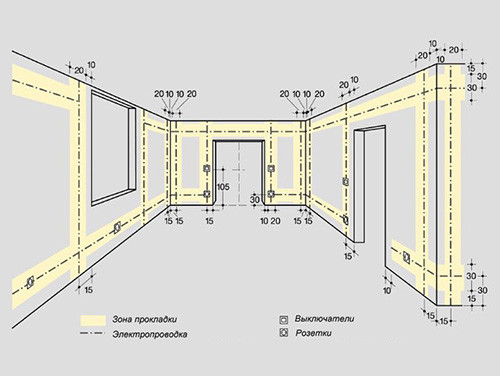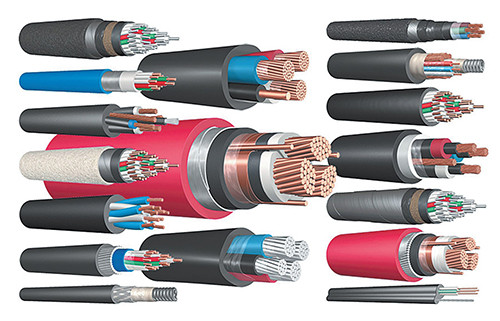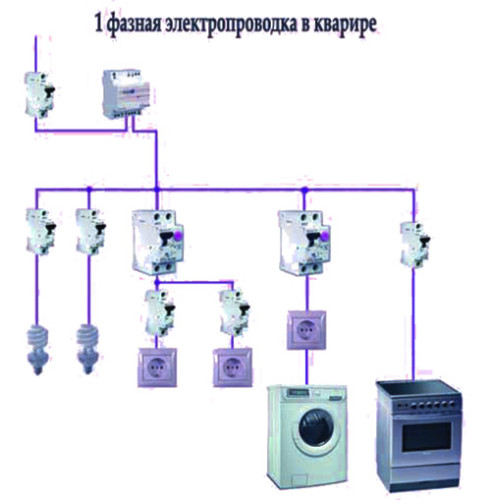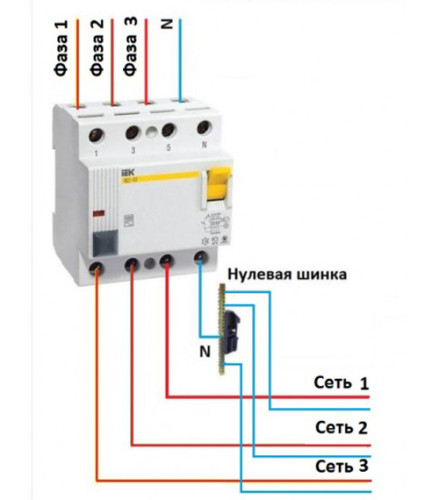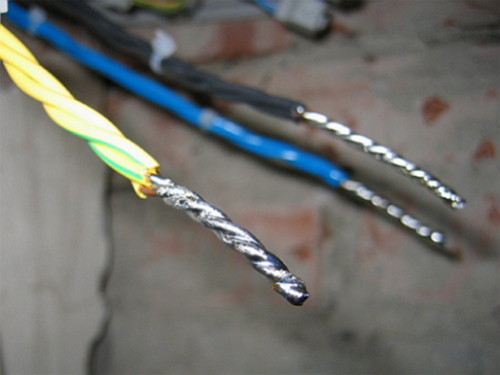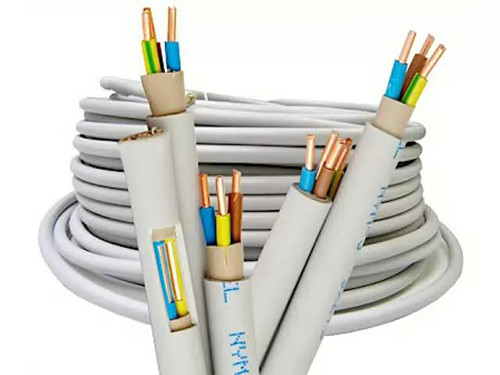
Calculation of wiring: Rules and features Useful advice
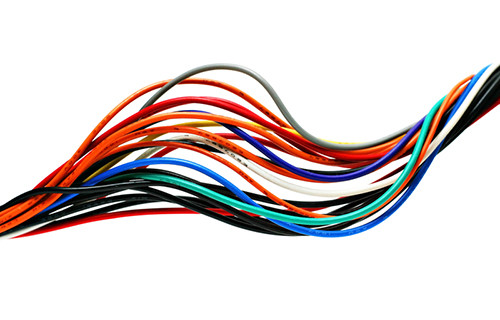
Make the wiring system with its own forces will not be easy if you do not know what materials for this use and how to calculate their number. When working with electricity, it should be extremely careful - there is always a risk of ocked, buy more or fewer wires and accessories than you need to choose wires with an inappropriate cross section or not to position them. In this article we will tell how to make the calculation of electrical wiring in the apartment and in a private house.
Content
What you need to know for calculations
Before starting the calculation of the wiring length and run around the house with a tape measure, it would be nice to deal with which wires can be laid in a residential building, which of them are suitable for open and closed wiring and can they even withstand the power of all electrical appliances? In other words, before proceeding to practice, you need to explore the theory.
Cable or wire?
Most people do not see the differences between the cable and the wire and use these words as synonyms. Yes, these products are similar, but the purpose, functions and specifications they have completely different.
So, the first difference becomes noticeable in the store - the wire costs cheaper cable. However, the defining distinctive factor is the product specification. The conductor is called a conductor of electricity with very thin insulation or without it without it. It may consist of one or more lived.
Important moment: Wires are suitable only for mounting hidden wiring, and the cable can be laid in the open.
The cable is a whole system of conductors, each of which has its own isolation. All these veins are collected together and surrounded by common, more dense insulation. In other words, the cable is a lot of insulated wires. It is not surprising that its cost is several times higher.
Number of wires
Determine the required amount of wires will help the wiring scheme, but if the house is built "from scratch" and there is nothing like this in it, you will have to work a tape measure. When measuring, consider all angles and niches, and even better - make marking with a simple pencil in places of future laying of wires and cables.
Another important point is the account of all electrical appliances that will be used in the house, plus a small stock in case you want to buy a second TV, a computer, toaster or coffee machine. As a result, you will have a kind of number. Multiply it by 15% to have a standard stock of the material "just in case" or for subsequent repairs.
If you plan to make electrical wiring in a wooden house for 2-3 floors, then crawl on it will be very tiring on it. In the case of large areas, you can go to another way - multiply the total area of \u200b\u200ball rooms, including non-residential, on 2. For example, if the area is 90 m², then it will take 180 meters of wires and a stock in 27 m. It seems that it is a lot, But it only seems. However, this method provides only an approximate figure, so there is a chance that the material may not be enough.
There is also another problem - no single type of wire may be needed for laying wiring in a private house. How to be in this case? You can risk and divide the total amount of the required material on 2 - part will go to the power supply, part - to lighting. But do not forget about electric stoves, washing machines, climate techniques - for such devices you need three-core cables, which also need to be considered.
What kind of wires need?
As soon as you "dived" into the calculation of electrical wiring with your head, it becomes clear that to measure the length of the walls and go buy some wire is not enough. It turns out that types of wires and cables are very much, and it would be necessary to be able to distinguish them and choose correctly. So, we smoothly approached the topic of the varieties of electrically conductive products.
As you already know, they may include as one living, so two, three and more. The veins, in turn, can be single and multi-proper. The shell is designed not only for isolation - different marking and colors make it easy to distinguish between the models.
Often, for household electrical wiring, the WGN cable is used, but the PUNP or NYM is suitable for this purpose. The latter is better to choose to safely connect to the shield on the site in an apartment building. It is suitable for organizing a separate connection of powerful devices. They can generally fully make a power layout, but due to high cost (more expensive than the above items) is used in rare cases.
It is useful to know: if you see the letter "NG" in the labeling, it means that the insulation is made of refractory plastic, which in the event of a wiring ignition allows localizing the fire focus.
Consider the main varieties of products that are suitable for laying wiring in a private house and an apartment:
- VG is a niggling cable used for premises with normal and high humidity. The lack of cable is that it does not have elasticity.
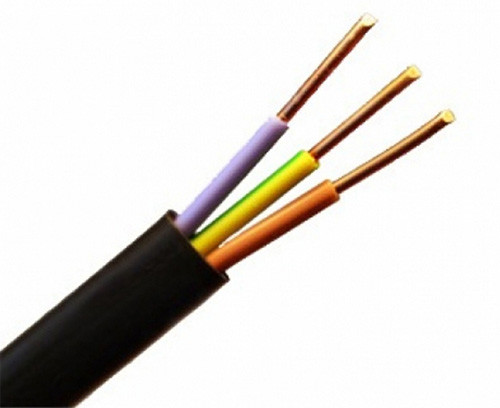
- Vggling - may have different forms, the most common is a flat cable.
- NYM - cable used for laying inside and outside the house, but only in areas closed from direct sunlight. It has low flammability, there is little smoke during contact with fire. Copper veins in the cable are wrapped in fine rubber, the outer shell is made of non-combustible polyvinyl chloride. Due to the presence of inner shells, the cable can easily be separated during the laying.
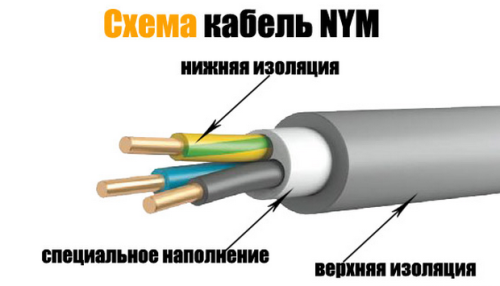
- PUNP is the most inexpensive flat wire of all types of conductors used for household wiring. It may be two- or three-core in polyvinyl chloride insulation (the veins differ in color). This wire can be used for lighting and sockets. In the first case, you should choose a two-housing option. The disadvantage is that the product isolation very quickly loses its protective properties when heated.
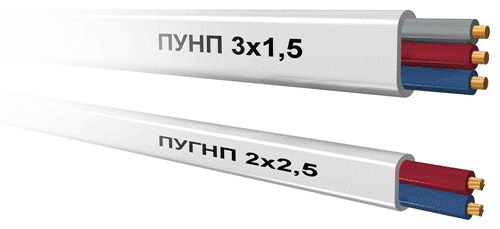
- ABS, PRN, PRD, PTS - for household wiring are used quite rarely and have rubber insulation. The pass is paved in the abnormal pipes, the RF wire is used for mounting on the street, PRD and PTS - to illuminate indoors with low moisture levels.
- PPV and PPP - wires for open wiring. The first has a separation base and non-combustible insulation, the second - polyethylene shell.
- PV is a medley wire with a non-combustible multicolored insulation of modified plastic. In household wiring, green-yellow PV1 is used. Models with numbers 2.3 and 4 serve for laying indoors in electrical panels. The last two are more expensive because of the elastic shell.
Previously, the aluminum wires with marking of APF were laid everywhere, and the ACPV, but now there are more reliable, functional and safe products.
When calculating wiring in the house, the PUE requirements should be adhered to insulation staining. So, the zero conductor is always blue, and protective zero - green-yellow. The phase coloring should always differ from the coloring of the zero conductor. There are many options - red, brown, white, black, etc.
One phase or three?
The owners of many private houses of the Soviet buildings are very often encountered with such a problem - the network does not withstand tension. Turn on the electric kettle, washing machine and computer - cuts out the light. The fact is that before people did not have such a number of household electrical appliances, but what is there and say - the TV was not all of everyone! Therefore, there was enough single-phase introductory cable, which is called, "with head". Today the situation is different, and only in the kitchen you can count at least 5 devices, without which we can not have a comfortable life.
If you think that having a three-phase network, you can include a larger number of devices, it's true, but with a small adjustment. Single-phase networks can also be designed for 10 or even 15 kW, so when calculating wiring for power benefits you can and not get. The three-phase networks are truly different, so it is an introductory cable with a small cross section. Since the current is diverged by 3 phases instead of one, the wire is less than the load, therefore the nominal input switch will be less. At the same time, the distribution panel for the three-phase network will be large, since the meter itself is more single-phase and for the circuit breaker will require 3-4 modules.
Pluses of three-phase input:
- The load distribution between the phases allows to avoid the effect of "skew" phases.
- Small cable cross section.
- The ability to connect high power devices.
- The possibility of increasing the maximum allowed power of power consumption (if the energy sales company is allowed).
Of the disadvantages, you can allocate the fact that for three-phase inputs or the substitution of the single-phase name will have to achieve permission from the power company. Most often, even with loyal, on its part, it is not possible to upgrade the network. In addition, high voltage increases the risk of lesion to the current, so when installing wiring into a private house, especially if it is wooden, it is better to put a three-pole automatic and overvoltage limiters in the shield.
If you summarize all the above facts, it becomes clear that the three-phase entry is suitable for large private houses with an area of \u200b\u200b100 m² and in cases where you plan to connect powerful electrical receivers. For a small country house or apartment, one phase is quite enough.
Make the calculation
Any wiring household in the apartment or in a private house originates from the introductory cable, which the entire load from devices and lighting lies. To select this cable, you need to calculate the section in accordance with all the equipment in the house, so that you have to make their full list. This includes refrigerators, televisions, computers, microwaves, table lamps, climate machinery - in general, all that is required for what is required.
Each household applialection has its own power, and you need to know the total value of the power, after which multiply the number by 0.75 (coefficient). Power can be viewed on the device itself (usually at the bottom or back side of the case there is a sticker with the necessary technical information). The table below includes the most common household appliances and their power consumed:
Finding the desired value, choose the cable cross section will not be difficult. For this, there is another table on which the dependences of the cable cross section, power and voltage are indicated. It displays data for copier cables, since aluminum today nobody uses.
By the way, why abandoned the use of aluminum cables and wires for electrical wiring, because such systems worked earlier, and everything was fine? If you figure it out, aluminum, like the material, is great for the manufacture of wires - it is light, perfectly conducts current, is not subject to corrosion, and when installing the LPP and is completely indispensable. However, there is one large "but", which put the cross on the use of aluminum wires - high specific electrical resistance (higher than that of copper 2 times). It is easier to say, to ensure the same conduction, you need an aluminum conductor at times more powerful, and therefore harder than when working with copper.
Another minus is that as a result of oxidation in contact with air on the surface of the aluminum product, a characteristic film is formed, which worsens its quality as a conductor. At the point of electrical contact with such oxidation, an increased transition resistance can be obtained, the contact is warm up and will further increase the electrical resistance, and the wiring is burning as a result.
But let us return to the calculation of the cross section of the wiring. When you figured out the introductory cable, you can move to the calculation of the cross section of cables and wires for sockets and lighting devices. Based on the data in the table, it becomes clear that for lighting it is necessary to use the wires of 0.5 mm², and for outlets - 1.5 mm². But often installed wires that is more powerful: for lighting no less than 1.5 mm², and for outlets - from 2.5 mm², unless, of course, the power of the instruments corresponds to the technical characteristics of the wire.
For example, as you can see in the table, if the voltage in the network is 220 V, then the wire with a cross section of 2.5 mm² will withstand the voltage up to 27 A or 5.9 kW. In such a situation, to protect consumers of electricity and wires, it is recommended to install a special machine with a maximum trigger current not more than 25 A.
In addition to calculating the load of the electrical wiring, it is necessary to take into account and the length of the final consumer power supply. Again, we use the table and determine the section for other types of load. In the process of designing and installing wiring, do not forget about the selectivity of automata.
Wherever you do the calculation of the load of the wiring - in a private house or apartment, remember that such work does not tolerate negligence, and errors can turn into great trouble. If you are not sure of your capabilities, it is better to entrust it with professional electricians.





